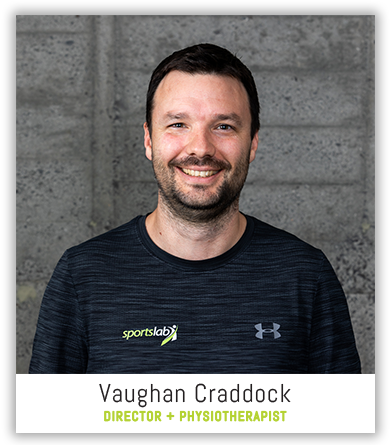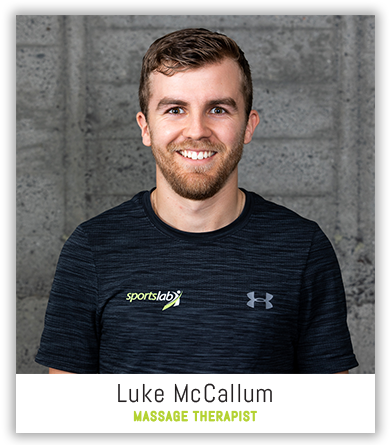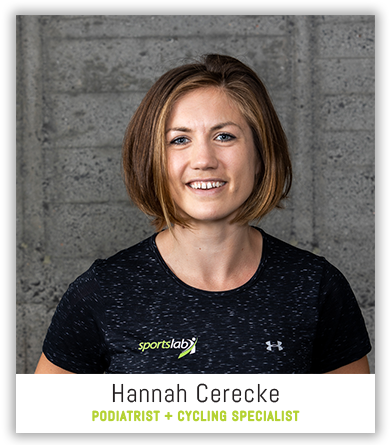Redefining Performance: What Are Your Rocks?
In the last blog we discussed how we must be able to effectively evaluate our current strengths and weaknesses in order to start building a plan for improved performance. We looked at the art of ‘gap analysis’ and how we need to address the ‘big rocks’ before addressing the ‘little rocks’. These ‘big rocks’ give us the ability to get our foundations solid, before we get too caught up on the smaller details. We need to consider that our foundation will have the largest impact on making us a robust athlete, and then we can add the finer details to make us great!
Like we mentioned in the last blog, we often find people chasing their little rocks first because that’s what their training buddies are doing, because that’s THEIR big rocks. We must remember that everyone’s big rocks and little rocks will look different to each other’s. Whilst keeping that in mind, today we’re going to talk, in a little more detail, what those key rocks could be. We’ll look at these rocks in the areas of physiology, biomechanics and behaviour.
Physiological Rocks
We need to consider that when we exercise or when we are moving through life in general, we have two types of load. The first is external load. External load is the duration, intensity and frequency of exercise, movement or treatment that a person will receive. But how a person responds to the external load is dependent on their internal load. Internal load is essentially the internal aspect of that person: their physiology, genetics, metabolism, hormonal status, nutrition, sleep, stress, mental health, range of movement at a joint, and inherent biomechanics. And the thing with internal load is that it is fluid and constantly changing. This is why you may go through good times, when training and racing is feeling great, and bad times where it feels like nothing is working or recovering. We all have different optimal internal environments that will allow us to adapt and respond to exercise, life and treatment. In order to identify our priorities and improve performance, we need to have a clear understanding of our unique internal load for us to positively adapt to our external load and ultimately achieve our performance goals, whatever they may be.
What we know is that exercise (and stress) disrupts internal homeostasis (think of this as the internal physiological balance in your body), and it is the recovery that is implemented that allows for adaptation and improved performance. You may have the best training program in the world but if you don’t maximise your recovery and adaptation to that training then your health and performance are likely to be compromised. We could write chapters abouts different ‘rocks’ that help support our physiology and aid our adaptation but here we’ll focus on two that appear to be the most common ‘big rocks’ for many people: Sleep. And food.
Sleep, in this fast-paced world, seems to be one of those areas of our lives that we neglect. Countless people try to function on less than the recommended amount of sleep. And it seems like we all know it, but we don’t make any steps to improve our sleeping habits. As Dr Matthew Walker once put if, if we weren’t meant to sleep then why on earth do we still spend a third of our lives sleeping?! There are adaptations that happen when we sleep and others that occur when we are awake. For example, we get a spike in our anabolic/ building hormones (e.g. growth hormone, testosterone in males) during the night that help our body recover at the muscular level. Our brain also get refreshed, with our glymphatic system (think of this as your brains waste disposal system) ensuring the drainage of fluid and metabolites. If we are constantly short-changing ourselves of sleep, then we are not allowing these adaptation and recovery processes to run their full course. And sure you may not see the effect after 1-2 days, you may not even see the effect after 1-2 weeks, but the cumulative effect (weeks or months) will be what will affect you and will likely increase your rates of illness and injury.
Now let’s talk about food. We all consume it. It is necessary for survival. It is social, cultural, and we structure our days around it. For some people it is joyful, for others it feels burdensome. But we all incorporate it into our daily lives. When we think about food for performance, we are thinking about nutrition. Nutrition is the fuel source that the body needs to support and maintain its physiological processes and functions. Adequate nutrition provides your body with enough energy to function at its optimal level by offering enough macronutrients and subsequently enough micronutrients. We need to have a strong foundation of basic nutrition like eating the right amount of food, having a large variety of foods (colours and food groups). Then once those foundations are in place, we can manipulate the foundations to shape the overall structure by prioritising nutrients throughout our day to match the specific timings and needs of training. Once those big rocks are sorted, we can look at the little rocks, or the finer, tailored details that can help take our nutrition to another level. A good example of this is the use of supplements. Too often we see people putting emphasis on supplements, before they get their “big nutrition rocks” sorted. But if we are relying on supplements on top of unstable nutritional habits supplements, they will not provide as much benefit as if there was a foundation of strong nutritional understanding and habits. Being aware of your nutritional needs is key to helping you achieve the best performance. Make sure you seek out proper nutritional sources that will help you understand your unique big and little nutrition rocks.
To understand how sleep and nutrition are affecting our body it may be a good idea to track and test some physiological variables. Using a science-based approach is always better as it takes the guess work out of it. Some ones that we recommend are: HRV (to get a measure of stress and activation of your nervous system, we want to ensure that we have a good balance between rest and digest, and fight or flight when appropriate. Being proactive and going to your GP and asking for iron status and vitamin and mineral deficiency checks. Consulting with an accredited nutritionist to understand how to eat for your training and life load while also supporting your physiology. And, in females, a good one to add is the tracking of your menstrual cycle and associated symptoms. Instead of focusing on just tracking training and food and sleep, take a step back, look at the bigger picture and what affects you and consult with someone that will be able to help you with this.
Biomechanical Rocks
When we train, race, and move about in general, there is an array of internal and external forces acting on the body. Biomechanics looks at the effect of these forces on and within the body, with a focus on the neuromusculoskeletal systems. For improved performance, we must be able to assess the most optimal way to move the body, and address areas of weakness regarding the application of mechanical concepts. When assessing and addressing biomechanics we need to have a firm understanding of the specific demands of our sport, and the various biomechanical skills needed in order to achieve these in various ways. These skills may include stability, or the bodies awareness and control of its centre of mass and base of support. Stability is always the goal, but sometimes athletes need to be balanced but ready to move quickly (i.e. instability) such as in a sprint start. It could be the skill of maximum effort, including the production of maximum forces with adequate use of all possible joint movements that contribute to the task, and the production of maximum velocity with correct use of joints in order from largest to smallest. It could be the skill of linear or angular motion, particularly the skill of conservation of both momentum and energy. Or it could be the skill of a well-honed biofeedback system.
All too often we see athletes focusing on pure strength of a particular muscle or muscle group, especially after injury, when it may just be that strength is not the issue, but the way that the body activates that segment or utilises it in a suboptimal way. When we train for our given task we also need to consider factors such as symmetry, is the sport symmetrical like cycling, or asymmetrical like sprinting or tennis, as this will have large impact on the type of biomechanical skill we need to focus on. And we need to remember that, like most aspects of performance, biomechanical skill is neither constant nor linear. Our biomechanical skill can fluctuate with our tiredness or stress level, and can be impacted by our equipment- ever notice how different running shoes or a new racket just feels a bit “off”? But one key across a range of different sport is the skill of adaptability. If the body can effectively achieve a given task in several different ways, then there is greater chance of success and less chance of injury. Whatever your given task, ensure you gain solid understanding of the unique demands of your sport and work alongside a team that can help you perfect your unique skill set, starting first with the simple tasks, then moving to the more specific and complex tasks.
Behavioural Rocks
This is a rock that underpins all other rocks. You could be at the peak of your fitness, all conditions perfect, but if your head just isn’t in the game then you could become unraveled. This is why in most sport science experiments you will see monitoring of RPE or rating of perceived exertion. This measure is used to get a gauge of how a person is ‘subjectively rating’ a session. In some way this reflects that ‘mind over matter’ concept. What we see is that whether a person believes they can complete a task, or whether they believe in a recovery process or supplement they are ingesting, will be the greatest impact on whether they will complete a session or gain any benefit from the recovery/ supplement. There is strong evidence for the phenomenon’s known as the placebo effect and the nocebo effect , where time and time again we have seen that if someone believes something to be of benefit or harm to them then it will more likely result in a change to health and performance.
While we’re not suggesting chasing placebos because “they work”, we are saying that it is important to be aware of motivation and mood as they are key indicators to performance. Too often we hear of people ‘pushing through’ days when they feel flat, unmotivated and run down. On these days it is better to take it easy and let the body rebound. Mood can be a really good indicator of whether or not you are ready for a hard session mainly because it is influenced by sleep, stress and nutrition (how many times have you felt irritated or flat or down after a week of poor sleep?). Tracking or being aware of your mood can be a great way in understanding whether or not you have looked after your physiology in a given period of high training and work stress.
Beyond being aware of our motivation and mood so we can adjust our training accordingly, we also need to learn about addressing these behaviours and working through any behavioural habits to help motivate and empower us to make the necessary changes to improve performance. Changing behaviours takes time and because we have so many things impacting our lifestyles it is important to recognise everything that is on our plate so that there is greater understanding of what can be done to help improve performance.
What dictates successful performance hinges on many factors. Like we’ve reiterated throughout this blog series so far, performance is the ongoing improvement of ourselves and expanding our envelope of what we are capable of, to achieve our best. It isn’t a simple liner process. When it comes to behavioural rocks, we need to apply this same thinking. Instead of looking at our training or event in a pass/fail of getting a personal best or not, we can look at the success of our session in how it enabled us to expand our envelope of knowledge, skill and ability. A good training block can mean many things, yet we see a common mistake in many athletes believing in exponential growth within a training cycle. This constant push for linear objective improvement can lead to sickness, injury or fatigue. We can and should expect ebbs and flows, and so changing our mindset on this can help improve our performance. Bringing in this definition of performance can help us adjust some potentially harmful behavioural rocks. Next time we toe the line let’s consider other factors as to how we analyse performance- did we improve our mental game by sticking it out in a race when things got tough, did we learn better pacing strategies, did we take things easier for our ‘B race’ as to not overdo our training for our ‘A race’. This mindset shift can help us have a healthier relationship to our health and performance.






